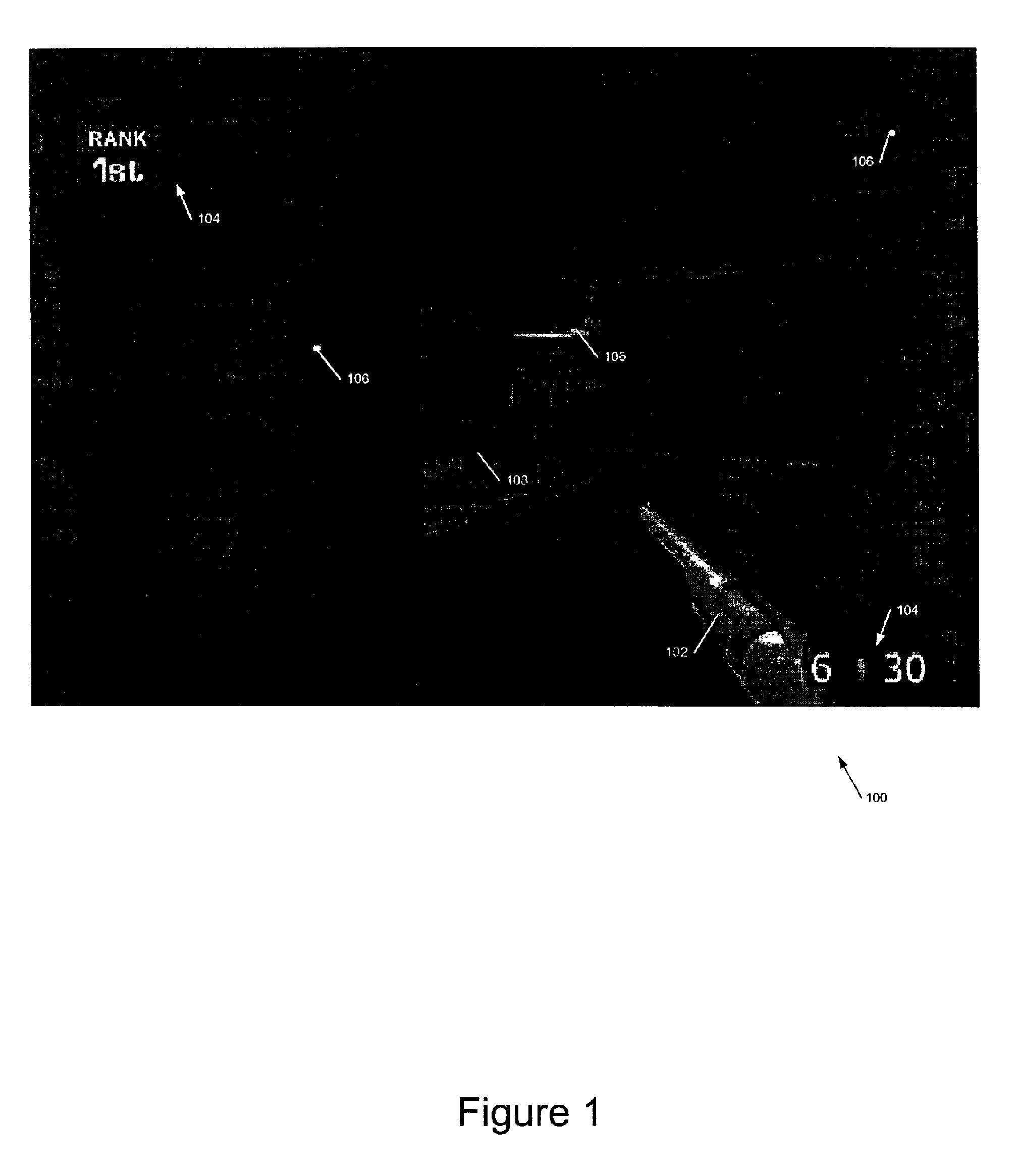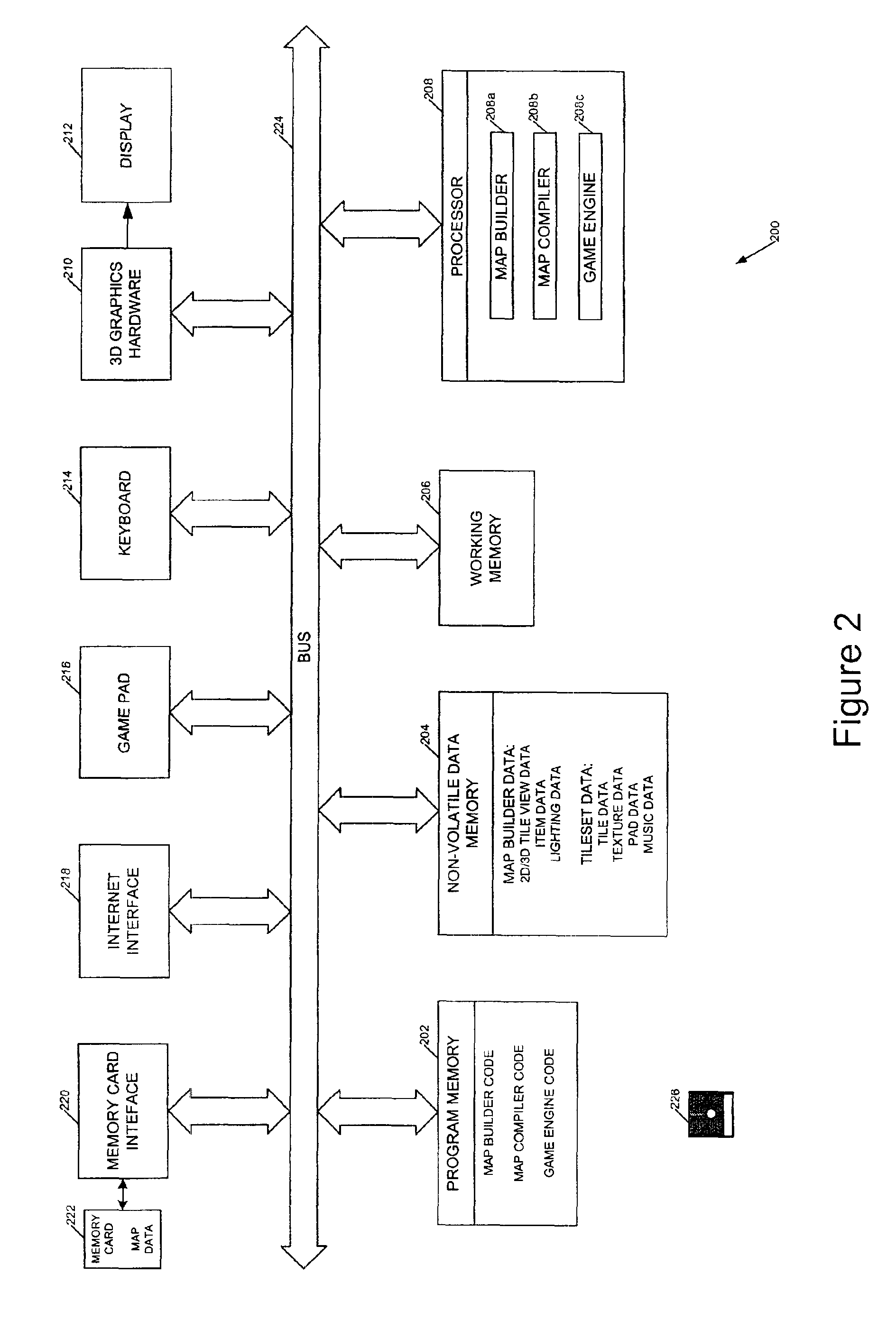Methods and apparatus for constructing virtual environments
a virtual environment and method technology, applied in the field of methods and apparatus for creating 3d virtual environments, can solve the problems of slow and laborious task, game may not work properly or at all, and it is difficult for inexperienced game designers to know how, so as to facilitate a number of optimizations of 3d virtual environment data
- Summary
- Abstract
- Description
- Claims
- Application Information
AI Technical Summary
Benefits of technology
Problems solved by technology
Method used
Image
Examples
Embodiment Construction
[0092]Referring first to FIG. 2, this shows a schematic illustration of the components in a computer system 200 which is suitable for implementing the present invention. The computer system includes program memory 202 comprising map builder code to allow a user to build a map of 3D components for creating a virtual environment, map compiler code for compiling the map into 3D virtual environment data, and game engine code for processing the 3D virtual environment data and rendering the data into a screen viewport for playing a computer game. The game engine code also provides the game functionality. As the skilled person will appreciate the map builder, map computer and game engine may comprise separate applications or may be combined, for example in a single application. Similarly the program code may be run on a single machine or distributed across a plurality of machines.
[0093]The program memory 202 is coupled to a processor 208 via a general purpose bus 224, to which is also coup...
PUM
 Login to View More
Login to View More Abstract
Description
Claims
Application Information
 Login to View More
Login to View More - R&D
- Intellectual Property
- Life Sciences
- Materials
- Tech Scout
- Unparalleled Data Quality
- Higher Quality Content
- 60% Fewer Hallucinations
Browse by: Latest US Patents, China's latest patents, Technical Efficacy Thesaurus, Application Domain, Technology Topic, Popular Technical Reports.
© 2025 PatSnap. All rights reserved.Legal|Privacy policy|Modern Slavery Act Transparency Statement|Sitemap|About US| Contact US: help@patsnap.com



